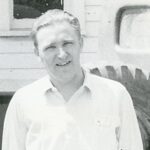The Hoist and Derrick was patent #1. It was the power of innovation that led to many rural developments. You might be asking what a hoist and derrick is and why this was important at the beginning of Polaris. Let’s take a trip back to 1944. Most of rural America was without power. Installing powerlines was a difficult job, requiring the manpower of 6-8 men to lift and set a pole. Local electric cooperatives were eager to get power to the rural residents but not nearly as enthusiastic as the residents were. Edgar Hetteen, the Polaris co-founder, had an idea that later led to the company’ of Polaris’s birth in Roseau, MN.
This is the story of Hoist and Derrick | Patent #1 | Polaris and how Edgar Hetteen’s invention changed the companies history.
The Early 1940's -Times were Changing
Opportunity was EVERYWHERE
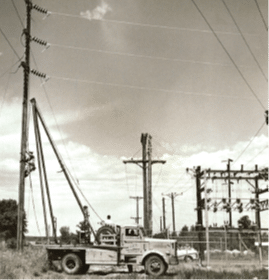
Innovation was powering change. The rural landscape was transforming. Electrical lines were being constructed to provide power.
Roseau County had about 3,000 rural families without electricity when Rural Electrification was established in 1936.
The first photo was featured in the Roseau Times Region newspaper in November 1937 when a REA crew did the early pole setting. The City of Roseau’s light plant was updated, and the proposed larger power unit was installed. The contract was for $47,000.
The Invention of the Hoist and Derrick | Patent #1 | Polaris Co-Founder Edgar Hetteen

Edgar Hetteen of Roseau, Minnesota watched, listened, and thought as the changes were occurring across the United States.
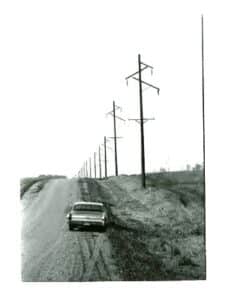
He was particularly interested in the rural changes in Minnesota and his home county. Edgar realized there was a need to construct hoists and derricks to place utility poles in the ground.

He had an idea!
With the power of innovation, electricity was being introduced to rural Minnesota.
This photo, captured in November 1944 by the Roseau Electric Cooperative, depicts a significant moment: the Roy Bloom farm in Moranville Township became the first farm in Roseau County to have electrical power supplied by REA. Pictured from left to right are August Bourque, the first manager of REA; Henry Jenson, the inaugural president of the board of REA; Roy Bloom; Mildred Bloom; and Milan Bloom.
To learn more about the efforts to get power to rural farmers across the state of Minnesota, read this historical article:https://www.minnpost.com/mnopedia/2017/02/power-farmer-minnesota-and-rural-electrification-administration/

Military Service and the Draft: WWII The Navy filled its ranks with volunteers until early 1943.
In 1944, during World War II, Edgar Hetteen and David Johnson were drafted and served in the United States Navy.
Allan was a freshman in the Roseau High School system.

Edgar was honorably discharged early because of a physical condition. At the age of twenty-four, he established Hetteen Hoist & Derrick in 1944. Using his recent patent design, his experience, and other resources, he worked to expand the business. Soon, other products, such as straw choppers, steel boat trailers, and field sprayers, were designed and manufactured at the company.
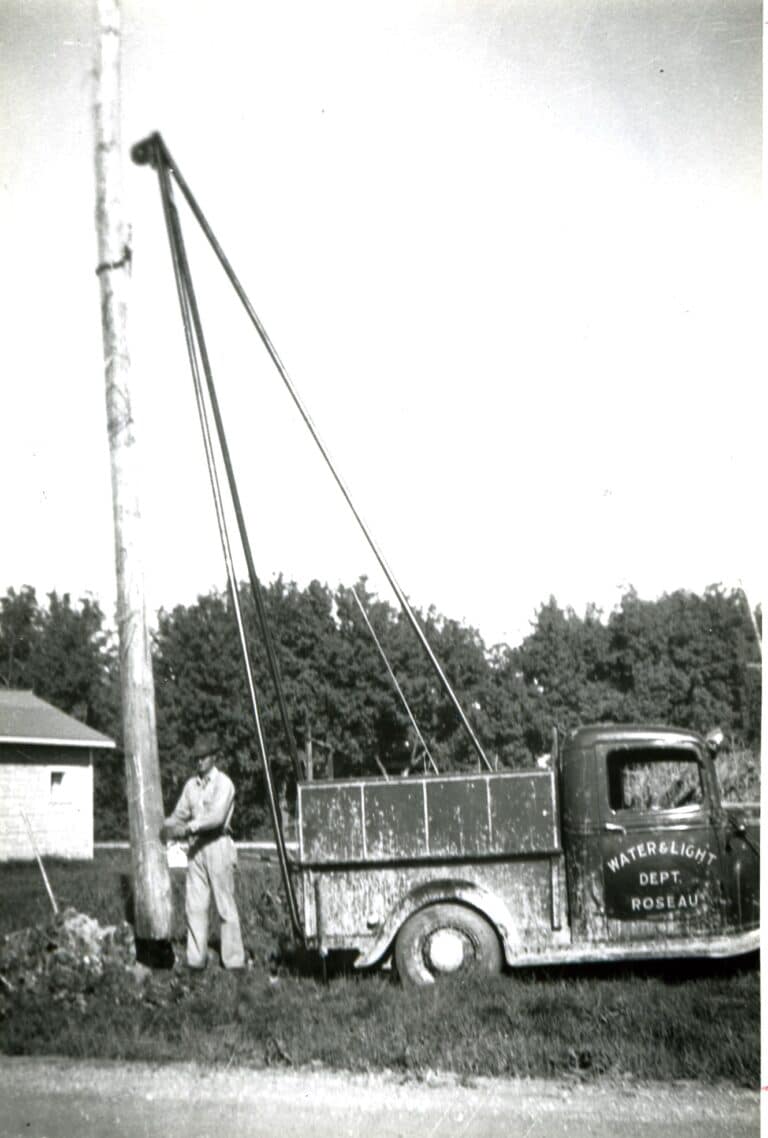
David Johnson turned 21 years while in the United States Navy, stationed in China helping to decommission U.S. ships that were being turned over to China. David received a letter from Edgar Hetteen, stating he had established a business that made straw-chopping equipment for farm combines and pole-hoisting machines for the electrical cooperatives. He required financial assistance.
David immediately became a part of the company by sending eleven dollars per month from his Navy salary of twenty-one dollars per month.
In 1946, David was discharged from the Navy. He returned to Roseau and promptly began working together with Edgar. They concentrated on product engineering and manufacturing.
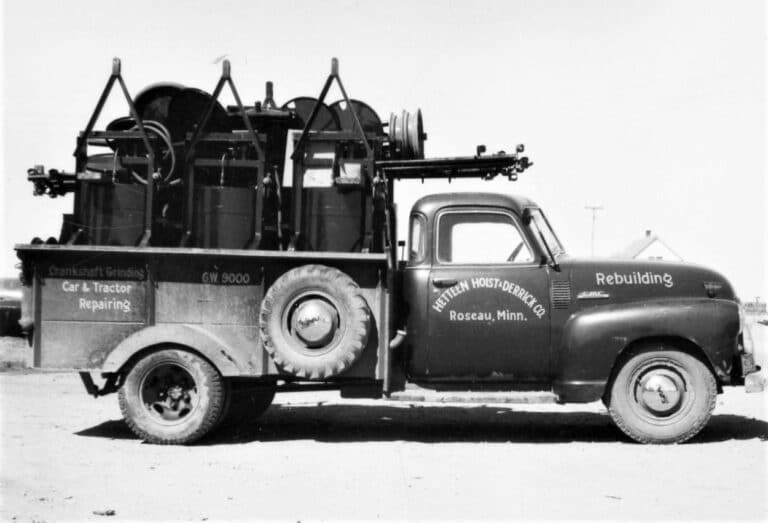

Following Allan’s 1948 graduation from Roseau High School, Allan had wanted to purchase a gravel truck. His older brother Edgar told him, “No! You’re coming to work for me.” After some thought, he agreed to work at the Hetteen Hoist and Derrick Company. In 1950 Allan borrowed $2,000 from his father-in-law Albert Erickson to become partners with Edgar, and Edgar’s brother-in-law David Johnson.
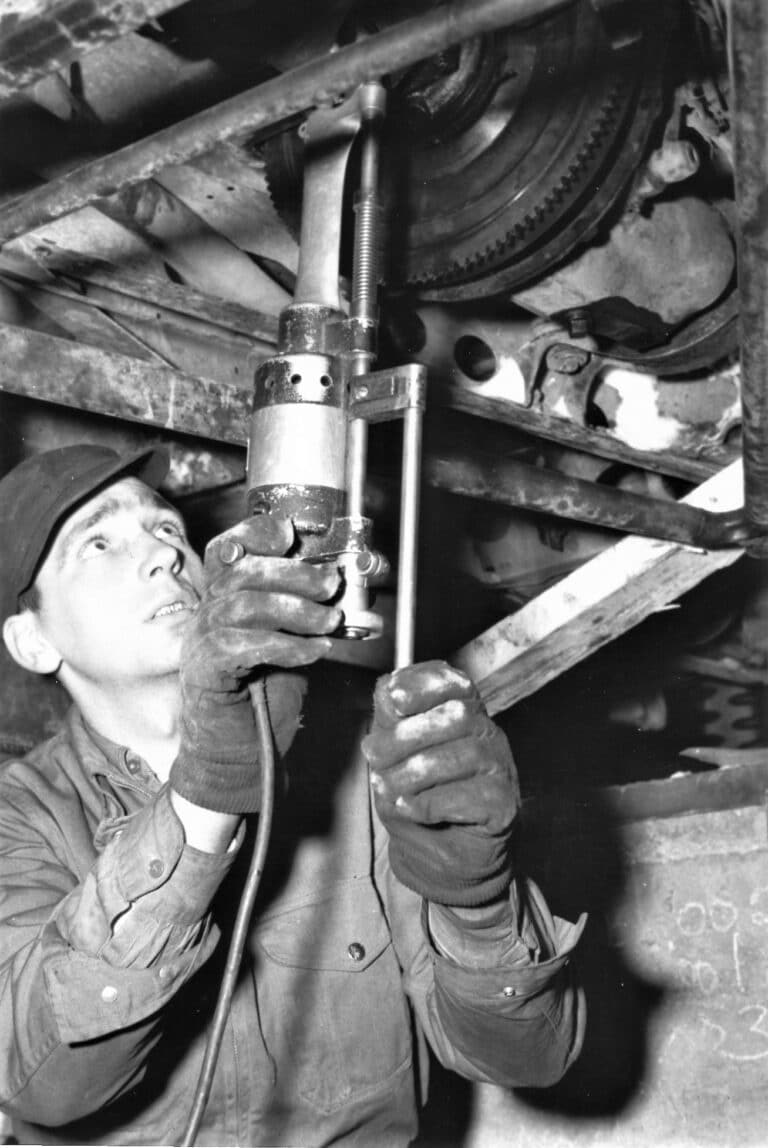

In 1950 with Allan’s added partnership, a business of car salvage and car repairs was brought into the company. Allan was known for his knowledge, mechanic skills, fabricating, and welding.
In the photo above he is working on a crankshaft while it’s still in the vehicle.
This is the History of Polaris - How power fueled innovation.
The three men were planners looking at the future, entrepreneurs, and jack of all trades. Above all they were risk takers who believed their future would be changed by design and innovation. Now you know the story of the Hoist and Derrick, meet the founders, and learn when, why and how.
Follow along as the journey takes us down the road from Hoist and Derricks to Powersport domination. The history is here so join us for the ride back in time.

David Johnson, Allan Hetteen, and Edgar Hetteen inspecting a spreader their company was manufacturing in the 1950s
Written and Researched by Carmen Przekwas
Memories shared by Mike Hetteen
Digital Creator Sinnamon Krings Roseau Promotions Director: All Rights Reserved Carmen Przekwas
Photos Hetteen and Przekwas Personal Collections, Minnkota Power Cooperative, Stearns County Historical Society, Roseau County Historical Society



